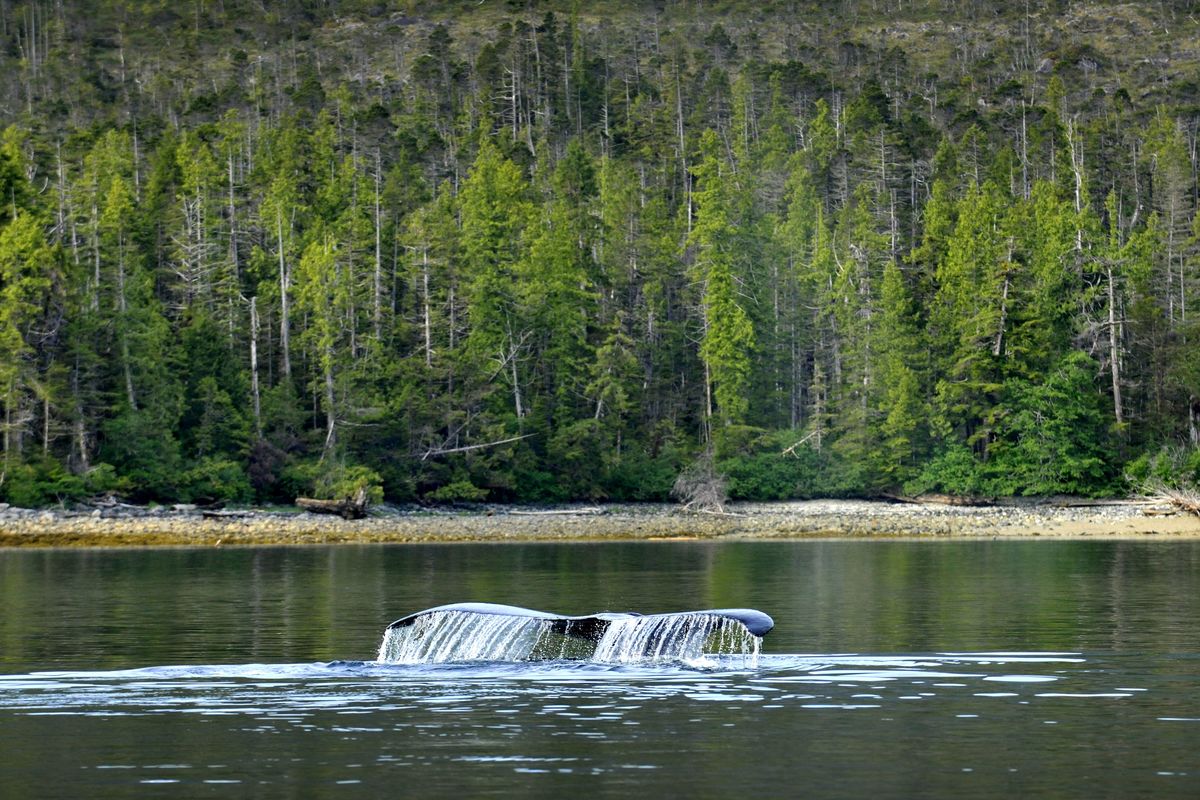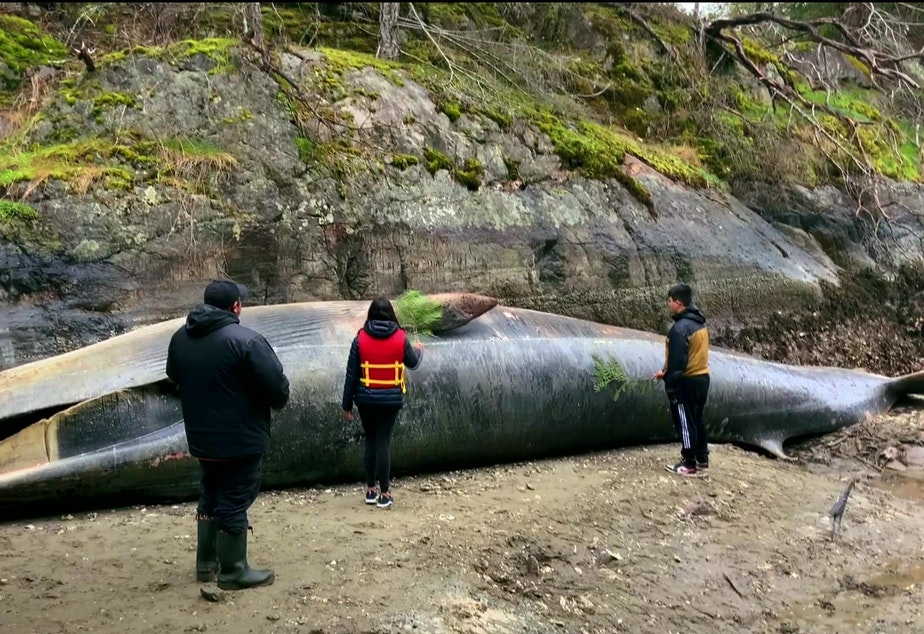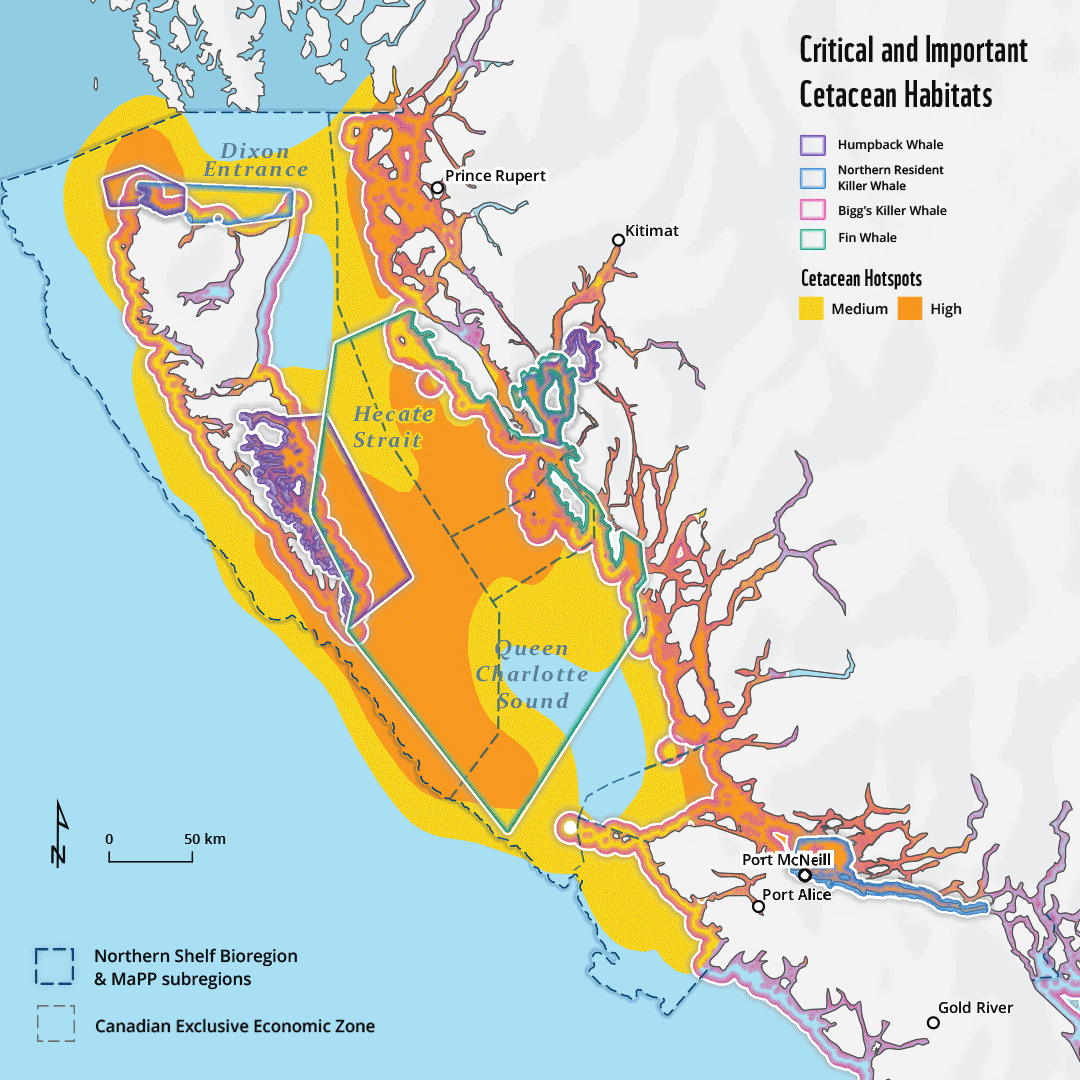Too fast, too filthy: Ship speeds and waste making Great Bear Sea a hostile habitat for at-risk whales
Between an almost-complete liquid natural gas (LNG) terminal in Kitimat, B.C., expansion projects underway in the already-busy Port of Prince Rupert, massive commercial vessels moving global goods, and popular passenger cruise routes running the length of the scenic Inside Passage, whales in the increasingly crowded and polluted Great Bear Sea are facing a growing number of risks.

This is why a new WWF-Canada analysis is mapping just how high risk some whale and other cetacean habitat in this area, also known as the Northern Shelf Bioregion, is becoming.
This report further bolsters our efforts to get government and industry to impose stricter regulations to prevent “unsustainable” losses — that is, whale deaths that outpace their ability to repopulate.
A previous WWF-Canada study confirmed that ship strike deaths are projected to dramatically increase with LNG ship traffic in the region, which would result in a 230 per cent increase in fin whale deaths and a 390 per cent increase in humpback deaths over the terminal’s 40-year lifespan. And WWF-Canada’s 2022 report on vessel waste nationwide confirmed that the many billions of litres of waste dumped annually in Canadian coastal waters contain pollutants that can cause serious health problems in whales, fish and invertebrates.
WWF-Canada’s latest analysis combined these studies for the entire bioregion — 102,000 square kilometres from north Vancouver Island up B.C.’s Central Coast, North Coast and west to Haida Gwaii — to determine the correlation between dangerously fast ship speeds and waste in critical and important whale habitat.
By mapping where high speeds and waste volumes overlap with critical whale habitat, it identified areas of highest risk for whales so we can better understand where regulations and other mitigation measures would be most effective.

The results show a clear argument for why and where new rules are needed now.
Data showed that in 2022, almost 90 per cent of ship routes in the region — tankers, ferries, cruise ships and other commercial vessels — travelled through critical whale habitat. Of those vessels, a staggering 97.8 per cent travelled at average speeds of more than 10 knots. Considering that vessel speeds between 9 and 20 knots are known to increase the probability of a strike being lethal from 20 per cent to 100 per cent, the danger to whales is obvious, and it’s increasing.
On top of this risk, the report found that the coastal waters with the highest concentration of ships travelling more than 10 knots were also where waste volumes were highest — to the tune of 59 billion litres in 2022 alone. The combination of lethally fast ships and contaminant-laden dumping practices makes for particularly hostile habitat for at-risk whale species like killer whales, blue whales, fin whales and humpbacks.
The report makes key recommendations for addressing these threats and calls on government and industry to impose stricter regulations on ship speeds, routes and waste-generating practices.
Read the full report here.


